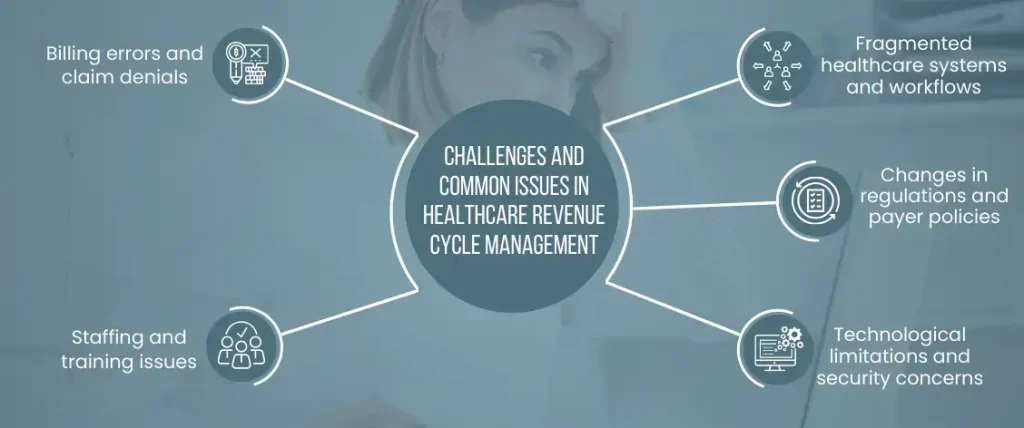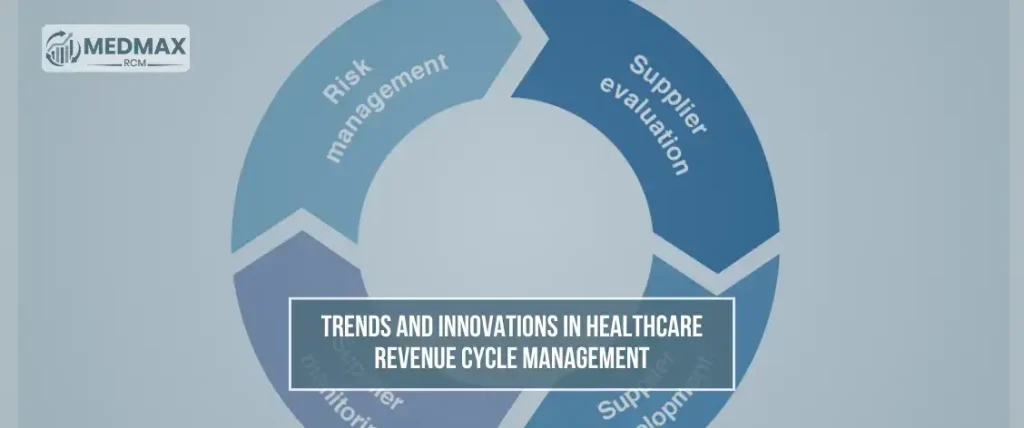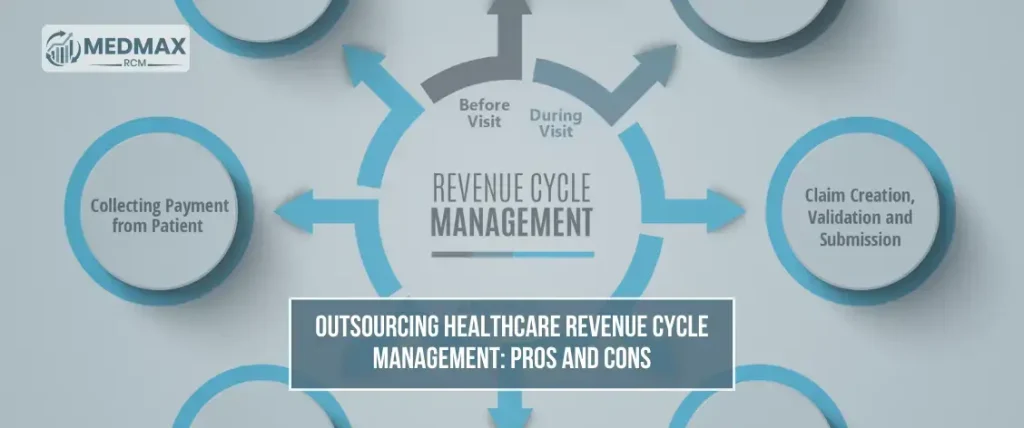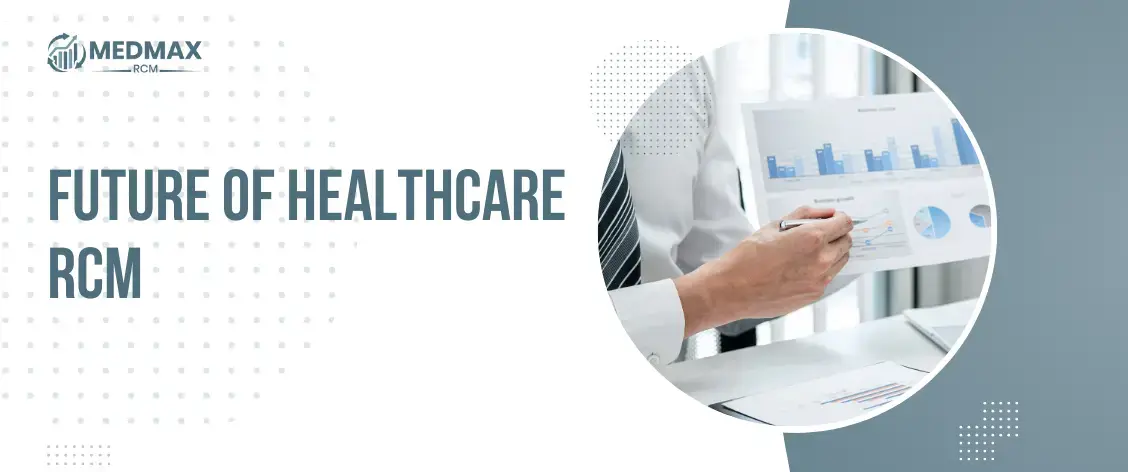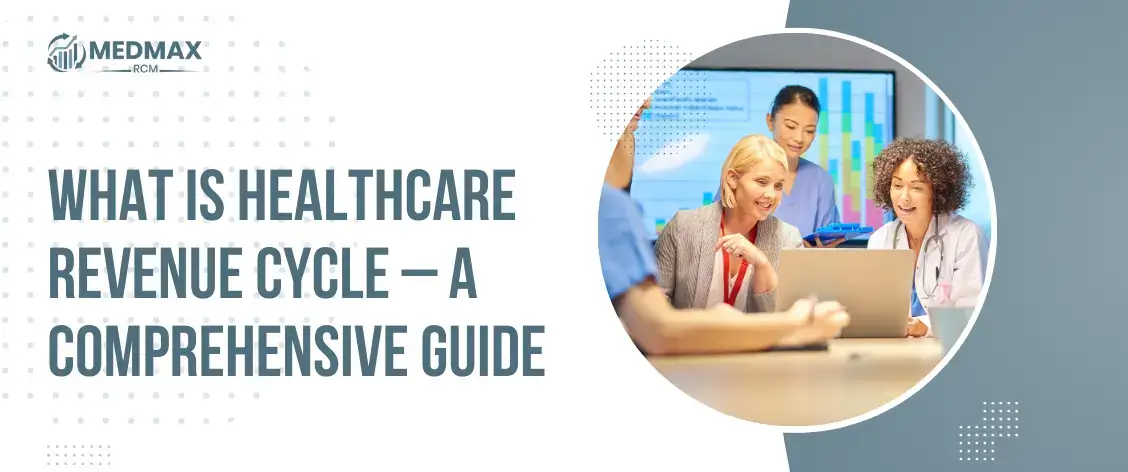
Details of Healthcare Revenue Cycle Management
Table of Contents
ToggleWhat is healthcare revenue cycle management?
Healthcare revenue cycle management (RCM) refers to the processes and procedures involved in generating, processing, and collecting revenue from healthcare services. The goal of RCM is to optimize revenue and cash flow while minimizing costs and improving patient experiences.
Understanding the revenue cycle process
Key stakeholders in the revenue cycle
The revenue cycle involves several key stakeholders, including patients, healthcare providers, insurance payers, and third-party vendors. Each stakeholder plays a crucial role in the revenue cycle, provider credentialing, and effective collaboration and communication between all parties are necessary for success
Challenges and Common Issues in Healthcare Revenue Cycle Management
Billing errors and claim denials
Billing errors and claim denials are some of the most common challenges in healthcare revenue cycle management. These issues can occur due to various reasons, including incorrect coding, missing information, and eligibility verification errors.
Fragmented healthcare systems and workflows
Staffing and training issues
Staffing and training issues can also impact revenue cycle management, as a lack of expertise and experience can lead to errors and inefficiencies in the billing and collections process.
Changes in regulations and payer policies
Changes in regulations and payer policies can have a significant impact on revenue cycle management, requiring providers to stay up to date on the latest industry standards and guidelines to ensure compliance.
Technological limitations and security concerns
Technological limitations and security concerns can also present challenges in revenue cycle management. Legacy systems and data silos can hinder data sharing and processing, while cybersecurity threats and data breaches can put the sensitive patient and financial information at risk.
Best Practices for Healthcare Revenue Cycle Management
Automating revenue cycle processes
Automating revenue cycle processes can help healthcare providers streamline billing and collections, reduce errors, and improve cash flow. Automation can include electronic claims submission, online payment portals, and patient scheduling and reminders.
Leveraging data analytics and performance metrics
Data analytics and performance metrics can provide valuable insights into revenue cycle management, helping providers identify trends, monitor key performance indicators, and make data-driven decisions.
Developing a patient-centric approach
Developing a patient-centric approach to revenue cycle management can enhance patient experiences and satisfaction, reduce collections, and improve collections rates. This approach can include patient-friendly billing statements, flexible payment options, and proactive communication.
Partnering with payers and vendors
Partnering with payers and vendors can help healthcare providers streamline billing and collections, improve payment processing times, and ensure compliance with industry standards and regulations.
Investing in staff education and training
Investing in staff education and training can help healthcare providers enhance their revenue cycle management capabilities, reduce errors, and improve performance. This investment can include training on industry standards and guidelines, as well as software and technology training.
Trends and Innovations in Healthcare Revenue Cycle Management
The role of artificial intelligence and machine learning
Artificial intelligence and machine learning can offer significant benefits to revenue cycle management, including improved data analysis, predictive modeling, and automation.
The impact of telehealth on revenue cycle management
Telehealth can offer benefits to revenue cycle management, including increased access to care, improved patient experiences, and reduced costs.
Blockchain technology and its potential in healthcare billing
Blockchain technology can provide a secure and transparent way to manage healthcare billing, with potential benefits such as reduced fraud and administrative costs.
Personalized payment options for patients
Offering personalized payment options can help patients better manage their healthcare expenses, which can ultimately improve collections rates and patient satisfaction.
The rise of value-based care and its impact on revenue cycle management
Value-based care is becoming increasingly popular in healthcare, which focuses on providing high-quality care while also reducing costs. This shift in focus can impact revenue cycle management by requiring providers to prioritize outcomes and patient experiences over volume-based metrics.
Outsourcing Healthcare Revenue Cycle Management: Pros and Cons
Advantages of outsourcing revenue cycle management
Outsourcing revenue cycle management can provide various benefits, including access to specialized expertise, cost savings, improved collections rates, and reduced administrative burden.
Potential drawbacks of outsourcing revenue cycle management
Factors to consider when outsourcing revenue cycle management
When considering outsourcing revenue cycle management, providers should consider factors such as vendor experience and qualifications, contract terms and pricing, data security measures, and the impact on staff and patients.
Choosing the right outsourcing partner
Choosing the right outsourcing partner for revenue cycle management can be critical to success. Providers should consider factors such as vendor reputation, experience, and certifications, as well as the level of customer service and support provided.
Tips for successful outsourcing of revenue cycle management
To ensure successful outsourcing of revenue cycle management, providers should establish clear expectations and goals, establish effective communication and collaboration with the vendor, and regularly monitor and evaluate performance.
Overall, effective healthcare revenue cycle management is critical to the financial health and success of healthcare providers. By understanding the basics of revenue cycle management, identifying common challenges and best practices, and exploring emerging trends and innovations, providers can optimize their revenue and improve patient experiences. Additionally, outsourcing revenue cycle management can offer benefits, but providers must carefully consider the pros and cons and select the right partner to ensure success.
Wrap Up!
While there are potential risks and drawbacks to outsourcing, selecting the right partner with a strong reputation and expertise can mitigate these concerns and provide a range of benefits, including improved collection rates, cost savings, and reduced administrative burden. At Medmax, we are dedicated to providing high-quality revenue cycle management services, with a focus on transparency, security, and personalized support. Our team of experienced professionals can work with you to develop a customized solution that meets your unique needs and goals, allowing you to focus on providing high-quality care to your patients while optimizing your financial performance.

Related Posts
Emily Thompson
Emily Thompson is a Revenue Cycle Management (RCM) Specialist with extensive experience in the medical billing industry. She helps healthcare organizations and medical billing companies improve claim efficiency, reduce A/R backlogs, and implement data-driven RCM strategies. Emily’s articles focus on end-to-end medical billing services, denial prevention, and technology-driven revenue optimization for healthcare practices across the U.S.


